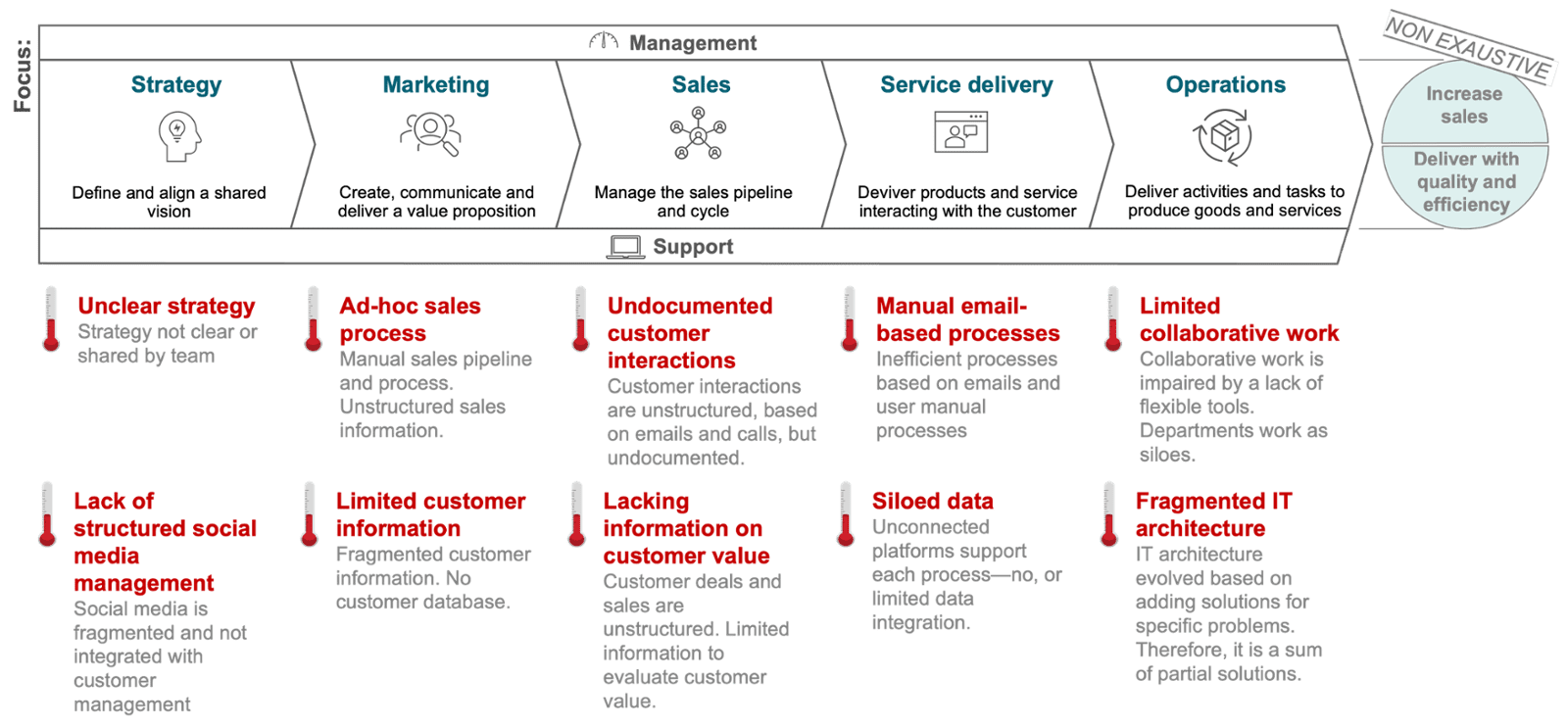Innovate your business
We envision innovation as an incremental approach that impacts multiple levels of the organisation.
Companies need to evolve, adapt and improve. Evermore small companies need to accelerate innovation and deliver more value to customers. Creative management has a practical, result oriented approach to innovation, based on digital transformation.
Ten types of innovation
Innovation is not necessarily the "big" shift in product paradigm, like, for example, the iPhone. Those are significant innovations, but Small and Medium Enterprises (SMEs) very often need to focus on more minor, easy-to-deliver transitions. They need to find ways to create value with an incremental approach.
In Ten Types of Innovation, Larry Kelley synthesises the building blocks of innovation —a framework with three categories. Configuration focuses on how the company works and the profit model. Offering focuses on the products or services. The experience focuses on customer reach and service delivery. Innovations are achieved by a multidimensional approach, delivering specific strategies for the ten building blocks.
“Innovating requires identifying the problem that matters and moving through them systematically to deliver elegant solutions.”

Integrated business management platforms for SMEs are achieving maturity
Integrated business management platforms for SMEs are achieving maturity
Extensive integrated Enterprise Resource Planning or Customer Relationship Management platforms have been available to large companies with complex and lengthy implementations. But, in the last decade, cloud-based platforms finally delivered easy-to-implement, integrated solutions for SMEs.
Small business are often technologically immature. Processes are primarily manual, based on Excel or user-based solutions. SMEs have limited capacity to invest in technologies and complex deployment projects, engaging development teams and business process consultants.
When mapping the business cycle from strategy to delivery and operations, we often find recurring and similar issues across small companies. At the core is the inability to automate and professionalise processes and customer relationships.

Platforms such as Zoho are cloud-based, software-as-a-service solutions that address SMEs requirements. They are easy to deploy and don’t require extensive consulting resources. Reasonably flexible to adapt to specific business requirements. Cover a large scope of business functions and needs, including marketing, sales, service delivery and operations, thus providing end-to-end business flow. Licensing costs are affordable. Those platforms are game changers for small businesses.
Digital transformation is a core enabler to accelerating and innovate
Deploying end-to-end platforms are digital transformation projects that can impact multiple layers of the organisation. These technological shifts are unique opportunities to replace old ways with new, modern, systematic approaches. Delivering innovation along the process.
We build a methodology to deliver digital transformation for SMEs that provides value quickly, improving and expanding consistently during the project. This methodology is centred on four core concepts —focused enhancements to deliver immediate value; —a layered approach to increase value; — design coherence to ensure consistency; —and team engagement to transform business through people.

Focused enhancements
Focus on small, easy-to-deliver, fast deployments. Identify a need and replace it with simple solutions. Ensure short deployment cycles. Introduce new functionalities every week. We envision this as an Agile project on steroids. Small changes engage users and require less training and testing.
Those focused enhancements target business requirements delivering small bits of innovation across the ten types of innovation.
Weekly cycles are perfect for this. Longer cycles can occur in parallel but are always intercalated with smaller deployments.

Layered approach
Complex challenges often require more extensive implementation. First, we focus on ‘quick and dirty solutions’ that solve the immediate problem. In parallel, we initiate to design of a more complex solution accelerated by insights from the previous deployment. This might require some level of re-work but reduce the risks significantly.
So, we create layers of change, dealing with complexity in a layered approach, from basics to a full solution.

Design coherence
Coherence is critical to ensure that minor targeted enhancements are delivered in layers and consistent across the sum of its parts. Therefore we need a uniform architectural design that maps all the layers. We provide architecture workshops to discuss and review the overall solution design and a target business model. This high-level design review is regularly reviewed to evaluate how ongoing deployments fit into the big picture

Team engagement
Digital transformation has a structural impact on teams’ processes and practices. We must re-invent processes and adapt to each user’s requirements for simple and effective workflows. So, we work closely with users to understand their needs, design simple solutions and support them in changing their workflows.
This approach allow us to be more effective in delivering innovation to small and medium companies, engaging teams in in-depth transformation based on very effective and flexible platforms.

